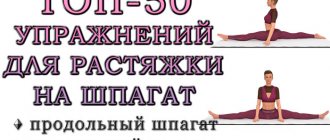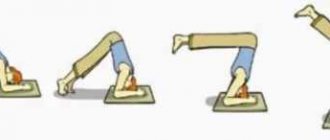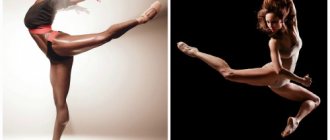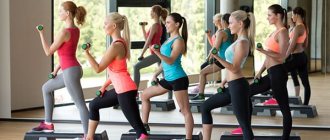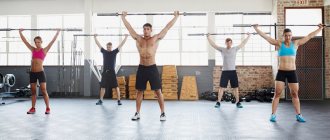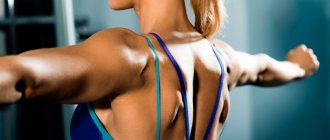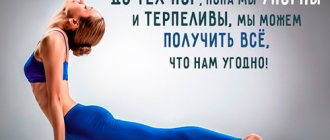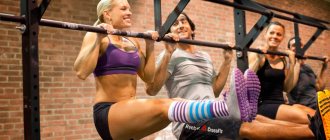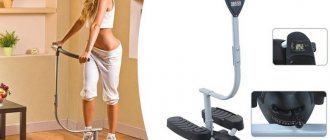Ballet is a high-level dance art that is several hundred years old. Our article What is “ballet” will help you learn more about ballet. Dancing ballet is not easy, since it requires from the performer not only grace and elegance, but also perseverance, physical endurance and patience. In order to learn how to dance ballet, it is best to enroll in a ballet class or hire an experienced tutor. If you want to practice on your own, then you need to do it regularly, with full effort. How to dance ballet correctly will be discussed further.
Even those who do not plan to make a ballet career can learn to dance ballet. After all, even amateur ballet dancing classes will help develop muscle strength and flexibility, improve posture and coordination of movements. It is impossible to learn ballet without daily repetition of the following exercises:
- Stretch marks. They need to be done in order to prepare the muscles for the load and reduce the risk of injury later. Stretching exercises should be done both at the very beginning of the lesson and at the end.
- Learning the six basic ballet foot positions - most of the exercises are based on them.
- Squats. Beginner dancers should do them in the first and second positions, and more experienced dancers should also do them in the fourth and fifth.
- Performing the basic complex of ballet movements at the barre.
These basic movements include:
- demi-plie - half squatting and lifting;
- batman - movement (forward, backward or sideways) of the working leg;
- batman tandu - stretching the working leg;
- batman jete - leg swing with a throw at 45°;
- Grand Batman Jete - leg swing with a large throw of 90°;
- releve - lifting onto half-toes or fingers.
The exercises should be performed to music that matches the movements in tempo and rhythm.
- Do not immediately go on pointe shoes - this can lead to foot injuries. In order to stand on pointe shoes, you need to have a strong, trained body, and most importantly, to master the dance technique well.
- Exercise in a calm frame of mind: stress will affect the body, significantly hindering movement.
- Do ballet only if you are physically healthy: ballet is contraindicated if you have diseases of the bones, muscles, or cardiovascular system.
Knowing how to dance ballet and having learned this wonderful art, you can easily master many other types of dance, because people with ballet training find most movements very easy. You can read about how to learn different types of dance in the articles on our website in the Dancing section.
Ballet is a form of high skill, an art that does not lose its popularity even after passing through the prism of time. This is the classic choreography that is the basis of domestic and foreign dance styles. But at the same time, it does not lose its relevance in its original form. It's impossible not to love ballet. This is magic that, without words, can reveal subtle feelings, experiences, emotions, actions and real actions. This is a great and luxurious act that requires true talent and many years of persistent, difficult training. Ballet cannot be danced, it needs to be lived.
If we talk about doing ballet professionally, then it will become the basis of the child’s life. To learn how to dance in this direction, you need to undergo serious training for eight or more years. And even when you become a professional ballet dancer, you will continue to study under the close attention and guidance of teacher-trainers. In addition, ballet is not only about strong physical training, it also means a large amount of theory and techniques that are practically impossible to study on your own.
If you want to learn to dance ballet not at a professional level, but for your own pleasure, then your age will not matter. The structure of your classes will be standard. You should start with light exercises that will help warm up and stretch your muscles. Only after a good warm-up can you begin more complex movements.
Despite the fact that the classes are not aimed at a professional level, you cannot do without a machine. This is where basic exercises and stretching are performed. In the free space of the rehearsal room you can train jumps, spins and other elements of ballet.
You should practice ballet regularly. It is better if classes are held at least three times a week. The duration of classes should be at least an hour in intensive mode. The basis of all the fundamentals in ballet, without which it is impossible to study any choreographic figures, are positions. Therefore, it is necessary to start studying ballet with them. In addition, there are basic hand positions in ballet. These should be learned after learning the leg positions. At the same time, the stomach should be pulled in and the posture should be straightened. You should take the movements seriously and diligently, trying to strain and feel the muscles as much as possible.
Mastering ballet is not easy; it requires a lot of effort and time, but the results of regular classes are worth it. A flexible, plastic body, beautiful posture, graceful gait, an excellent toned body and self-confidence - this will be a real reward for honest work.
Do you want to do ballet? This is a very worthy hobby. Ideally, ballet should be practiced in a special group under the guidance of a professional. But not everyone has this opportunity. In this case, you can study at home.
At the same time, you need to understand that even if you approach the preparation process thoroughly, read a mountain of specialized literature, watch many useful videos, it is unlikely that you will be able to learn ballet at such a level as to perform on stage. But for yourself, for general tone or to perform at a party in front of friends, practicing ballet at home is quite possible
.
Choreography is one of the highest types of dance activity. Ballet movements were created by the best French and Russian choreographers for performance on stage.
With the help of ballet classes, you can learn to feel your body, understand music and move with it to the same rhythm. By regularly practicing ballet, you will improve coordination of movements and train the vestibular apparatus. In addition, ballet classes correct your figure, help you get rid of extra pounds, and correct your posture.
, and sometimes there may be an increase in the length of the legs and neck, which always looks very elegant.
A passion for ballet is a great way to become interesting to yourself, your beloved man and those around you. For some people, life follows the principle of “work-home”, “home-work”, no hobbies, everything is gray and mundane. Bring new colors and emotions into your life! When a person does what he likes, his eyes light up, and in other areas of life everything begins to improve. The groom or husband will definitely appreciate your efforts, slender figure and acquired grace.
- The structure of choreography classes is very standard and it doesn’t matter whether you study with a trainer or at home.
- First come the easiest exercises to warm up and stretch the muscles. Then long and complex exercises are performed. A few hours before classes you need to eat well, otherwise you may simply not have enough strength and energy.
- You definitely need a machine
, since all the basic exercises are performed on it. At the end you need to do some stretching. It is not done on a machine, but in free space - jumps, spins and the obligatory final bow are practiced. - You should practice ballet 2-3 times a week for an hour
, you can do it for an hour and a half. If you do this regularly, you will notice results within a month. Your shoulders will straighten, your posture will become more proud, and your self-confidence will increase. - There is an opinion that to practice ballet you need to buy a special uniform, including pointe shoes and a tutu. It's a delusion. To dance fluently on pointe shoes requires years of training, and a beginner simply cannot stand on them .
For beginners, it's best to wear regular workout clothes , such as leggings, or stretchy, tight pants or a top. Special ballet slippers, which can be found in stores for dancers, are suitable as shoes. You should buy such shoes in a slightly smaller size than you wear in everyday life, since ballet slippers should fit snugly to your feet.
Positions in ballet are the basis of all the fundamentals, without which it is impossible to study any complex choreographic figures. Therefore, it is necessary to start learning ballet art at home with them.
- First position - stand straight, push your heels together, and turn your toes in the opposite direction from each other, thus forming a straight line on the floor.
- The second position is very similar to the first, but there is still a significant difference - the heels of the inverted legs are approximately one foot apart.
- Third position - the heel of one of the legs stands in front of the instep of the other foot and lightly touches it.
- Fourth position - place your turnout feet parallel to each other so that you can place another foot between them, while placing one heel directly in front of the toe of the second heel, thus distributing body weight evenly.
- The fifth position is in many ways similar to the fourth. But there is also a difference, which is that the soles of both legs are in close contact with each other.
- Sixth position - the legs are not positioned in an inverted manner, but are in their normal position.
There are also basic hand positions
, which are best mastered after studying leg positions. Each position must be performed very carefully, trying to feel the muscles as much as possible and tense them. The stomach is always retracted, the posture is straight and graceful.
- First position: lower your arms down and round, palms facing up.
- From the first position, the arms smoothly rise to the level of the abdomen, the shoulders freely look down.
- From the second position, the arms smoothly move to the top of the head, and the hands maintain the main position.
- One hand is at the level of the stomach in the second position, and the other hand is above the head in the third position.
- One arm is straight, slightly moved away from the body, and the other is in third position.
- One hand is still near the body, and the other smoothly moves down, forming a second position.
- Extend both arms to the sides so that they form a semicircle from the elbow to the wrist - this is the seventh position.
How to learn ballet at home: video
Even if you are not going to practice ballet professionally, such classes will be very useful for maintaining health and improving your appearance. By the way, many professional football players engage in choreography to improve the quality of their game, but for the average person, ballet develops plasticity and flexibility
.,
Plus, if you don't like working out in the gym with weights, ballet exercises are a great alternative. Mastering this type of dance will not be easy, but the results from regular ballet classes are worth it!
For two centuries now, ballet has remained the highest manifestation of choreographic art, which very few can master, let alone achieve mastery in it. And the more some people have a desire to take up this type of dance. Naturally, for this to happen, certain conditions must exist, and the applicant himself must meet very strict requirements. If you don't know how to learn ballet, but still want to achieve professional heights in it, pay attention to the following aspects.
Age.
Sadly, for the vast majority of adults who have never practiced ballet, the path to this area is closed. The reason lies in the fact that training in classical choreography should begin from an early age, when the body (especially the musculoskeletal system) is in the development stage. Typically, professional ballet training begins at the early age of 7 years. During this period, the child already has fairly strong bones and stable joints, but the skeleton still remains flexible, and the muscles and joints are in a state of active development. An adult can come to this profession from related fields of activity, for example, acrobatics or gymnastics, which, in turn, he has also studied since childhood.
Theoretical knowledge.
A ballet dancer is not just a dancer performing a choreographic number. His training includes an extensive theoretical course, including the following disciplines:
- musical theory
- a ballet dancer must know the laws by which a musical composition is built, because it is the basis of the performance, reflecting its structure and expression; - literature
– the plot of most ballet performances is based on literary works, so the artist must know at least the characters and images of the characters, the plot outline; - history
- although ballet is a type of dance, a professional artist must know the history of theater and music, choreographic and visual arts; - anatomy and physiology
- it is impossible to imagine how one can learn to dance ballet without knowledge of the functioning of the musculoskeletal system, muscles, respiratory and other body systems.
These and many other theoretical subjects form the basis of the education of a professional ballet dancer. Without them, he cannot even qualify for roles in the corps de ballet.
Practical skills.
However, theory without practice will also not help you achieve any heights in ballet art. Therefore, a professional artist must master the following disciplines:
- choreography
- the training includes classical, characteristic, modern and historical dances, because ballet borrows elements of each of them; - acting
- a ballet dancer does not just dance a dance, but plays a role, expressing the feelings and character of his character with the help of movements; accordingly, he must master the means of this expressiveness.
Physical and moral data.
How to learn ballet with an undeveloped body? No way. Classical (and any other) choreography requires the artist to have physical strength, endurance, plasticity, flexibility and impeccable health. The state of his body directly determines how the performance on stage will look. However, for a person studying ballet, not only physical, but also moral qualities are important - the ability to endure discomfort and pain, to persevere both in training and on stage (even in case of failure). Sometimes this is even harder than physical activity and requires enormous willpower and endurance.
Based on the above, you don’t even have to try to master classical choreography on your own. But if this is not possible, where to study ballet? To master the basic principles (precisely the basics!) of this art, specialized schools are created for children. One of them is the “Ballet Workshop” of Yegor Simachev, one of the artists of the Russian Bolshoi Theater. It teaches not only the “technical basics”, but also instills a love for the culture of ballet.
How to dance ballet?
Ballet is a high-level dance art that is several hundred years old. Our article will help you learn more about ballet. Dancing ballet is not easy, since it requires from the performer not only grace and elegance, but also perseverance, physical endurance and patience. In order to learn how to dance ballet, it is best to enroll in a ballet class or hire an experienced tutor. If you want to practice on your own, then you need to do it regularly, with full effort. How to dance ballet correctly will be discussed further.
How to dance ballet: basic exercises
Even those who do not plan to make a ballet career can learn to dance ballet. After all, even amateur ballet dancing classes will help develop muscle strength and flexibility, improve posture and coordination of movements. It is impossible to learn ballet without daily repetition of the following exercises:
- Stretch marks. They need to be done in order to prepare the muscles for the load and reduce the risk of injury later. Stretching exercises should be done both at the very beginning of the lesson and at the end.
- Learning the six basic ballet foot positions - most of the exercises are based on them.
- Squats. Beginner dancers should do them in the first and second positions, and more experienced dancers should also do them in the fourth and fifth.
- Performing the basic complex of ballet movements at the barre.
These basic movements include:
- demi-plie - half squatting and lifting;
- batman - movement (forward, backward or sideways) of the working leg;
- batman tandu - stretching the working leg;
- batman jete - leg swing with a throw at 45°;
- Grand Batman Jete - leg swing with a large throw of 90°;
- releve - lifting onto half-toes or fingers.
The exercises should be performed to music that matches the movements in tempo and rhythm.
- Do not immediately go on pointe shoes - this can lead to foot injuries. In order to stand on pointe shoes, you need to have a strong, trained body, and most importantly, to master the dance technique well.
- Exercise in a calm frame of mind: stress will affect the body, significantly hindering movement.
- Do ballet only if you are physically healthy: ballet is contraindicated if you have diseases of the bones, muscles, or cardiovascular system.
Knowing how to dance ballet and having learned this wonderful art, you can easily master many other types of dance, because people with ballet training find most movements very easy. You can read about how to learn various types of dance in the articles on our website in the section.
The world of ballet, so sublime, unknown and magical, is closer to us than it might seem. Thanks to the Ilze Liepa school, everyone can do it - you don’t have to have professional skills. Practicing this art will teach you to hold your back, instill a culture of movement and internal discipline. And if a child has real talent, then the school will help him reach career heights. M24.ru will talk about how little ballerinas are taught and what comes out of it.
“Princess Diana studied ballet all her life, so seriously that she did jumping. By her posture you can understand what this gave her. The graduates of the Smolny Institute could always be recognized when they were sitting at the table. And the girls who study at our school look completely different: an inspired expression on their faces, a different sense of themselves in the world. They continue to remain girls, without advancing their development externally and internally, which, it seems to me, is very valuable. It’s not for nothing that they say: “If you straighten your back, you straighten your soul.” Therefore, ballet classes are an opportunity to refine your appearance,” says the school’s founder, Ilze Liepa.
Girls, and even boys, can enter this wonderful world as early as 2.5 - 3 years old. It is from this age that they are accepted into a ballet school, where they study until they are 15–16 years old. There are no strict exams: everyone is accepted into the school. Children usually study in the morning according to the early development group program. In addition to ballet classes, they also have general education subjects: English, Russian, mathematics, rhythm, drawing and dance. In the evenings, children aged 6-12 years old who are already in high school come: they only dance for two hours a day, at least 3 times a week.
What do little ballerinas learn?
Mandatory ballet subjects are rhythm, barre work and classes with a choreographer.
“Rhythmics is a subject that the youngest children begin to study. This is an opportunity to learn to exist in the space of music, hear a musical phrase, distinguish between forte and piano and convey this through movements. It’s amazing that when a child tries to move with the music, he begins to feel it very deeply and understand it very subtly,” says Ilze Liepa.
According to her, working with a choreographer is no less important. This should be a knowledgeable teacher who will stage compositions, select music and images that are appropriate for children's age. All this gives the child the opportunity to dance and understand that through dance he can express himself, show his character and temperament.
“My father, having once sent Andris and me to a circle at Chkalov’s club, said: “I really want the children to dance first.” And this is important, because if you immediately start doing only movement, gymnastics, improving the body without an element of creativity, it may not blossom in the child,” the founder of the school is sure.
If a choreographer choreographs a dance, then the teacher rehearses the elements necessary for the dance during the lesson and simply works on the technique. Exercises at the machine are boring and tiring, but they help develop purity of movement.
The branch in Zhukovka has found the necessary balance between boring exercises and creative dance. Teacher Valentina Gorskaya says: “The kids here are glowing. They come here with pleasure. Of course, they don’t really like standing at the barre, they prefer to do choreography, but we explain that without effort, without a certain skill, without certain exercises, you won’t get what you dance.”
Where to begin?
You can practice body ballet either independently, at home, or under the supervision of special trainers in a fitness club. If the first option seems much more attractive to you, you should choose special programs for beginners. Usually these are detailed instructions and tips that will help you properly tune in to the right direction and teach you how to avoid the most common mistakes.
Classes at home are best done in front of a large mirror, and the ballet barre can be replaced with an ordinary chair. It is worth noting that a chair, although a good analogue of a machine, cannot always provide the necessary support. If there is a sofa/chair/table or any other strong covering nearby, it is better to lean on it sometimes.
So, if you want, start doing body ballet as soon as possible and experience all the joys of this art firsthand!
What little ballerinas shouldn't do
Professional ballet requires absolute restrictions on food and lifestyle. “In my time, we were generally forbidden to ski, skate, or roller-skate, because in ballet the muscles work to turn, while in sports they work straight, and this could affect the positioning of the legs,” said Valentina Gorskaya. “Of course, you need to monitor your food, but children in our school study for general development, and therefore we can only recommend such restrictions, and not require,” she adds.
But what is certainly required of all children to study at a ballet school is discipline. You need to have time to go to a regular school, do your homework, come to the ballet school and study there for two hours straight. “It even sometimes happens that parents cancel some classes in high school if the child really wants to take ballet,” notes the teacher.
“I only praise those who are not at all confident in themselves”
There are no children who are passionate about dance without passionate teachers. “When teaching classical dance, you must love children madly. If you love them, they will take knowledge from you,” admits Valentina Gorskaya. – I have been teaching for 19 years, during which time I have learned to sort children. He came - and I immediately see: this one immediately perceives, we need to work with this, we need to be more kind with this, and more strictly with this.
Sometimes I see that a child is not doing well, but I tell him: “Today you are doing great!” And you look - he pulled himself up, felt warmth and attention, and then he succeeds. But in general it’s not easy. Children take everything from you. You come home like a rag. But I absolutely love this school,” shares Gorskaya.
In turn, choreographer Elena Baryshnikova prefers that lessons are always fun, even if you have to scold the children. “I only praise those who are completely incapable and lack self-confidence. I scold the rest,” she says. “The main thing is that they are interested, because this is the only incentive for people who are not trained to be professionals in this matter.”
What data is needed (physical and external)?
Ballerinas cannot be absolutely identical and often differ in body types, but in order to become a sought-after dancer, it is desirable to have a more or less proportional body:
- Not too big a head;
- Moderately long and graceful arms and legs;
- A torso that is proportional to the rest of the body;
- Good stretching (especially ankles);
- Straight legs, not bent at the knees;
- Strong, flexible back;
- Slender physique;
- Good muscle tone;
- High arched foot.
There is an “ideal” foot for pointe shoes. In this case, the toes are approximately the same length, providing a square platform for stability. It won't be easy for those with long socks.
Important!
Some foot shapes are strictly unsuitable for ballet and can be subject to serious injury.
“The competition is the result of what we do”
Participation in competitions is a very important stage in the development of an artist, professional or non-professional, therefore children from the Ilze Liepa Studio School often participate in them. In order to provide an incentive to study, the competition is very important, because different teams come there, both strong and weak. Seeing how other people work makes children more interested.
“At competitions you need to be able to gather yourself as much as possible. We had children who, it would seem, were not very ready for such events, but they gathered on stage, showed good results, and then began to work even better in class. Competitions are a certain result of what we do,” says Elena Baryshnikova.
Students from the school in Zhukovka took part in competitions four times, and all four times there were good results: in Spain they won the Grand Prix twice, and recently they became the best at the “Pearl of the Orient” competition-festival in China.
Abs workout
1. Leg to the side
Stand sideways to the support, heels together, toes to the sides. Holding the support with your left hand, lift your right hand and move it to the right.
Raise your right leg as high as possible. Don't bend your knees. Minimum housing deflection is acceptable.
Repeat for 35-45 seconds.
2. Raising the leg from a lying position
Lower abs workout. Lying on the left side of your body, bend your right leg and lift it off the floor. Bend your left arm at the elbow and transfer your body weight to it. Raise your right arm and keep it straight. Stretch your left toe and dynamically lift your leg up to the level of your raised arm. Repeat: 35-45 sec.
3. Feet to the side
It affects the oblique and transverse abdominal muscles, as well as the adductor and abductor muscles of the thigh. Stand against a support and place your hands on it. The legs take first position. Raise your right leg up to the side for 35-45 seconds. Next, change legs and repeat.
4. Body lifts with weights (variation 1)
Condition – the dancer must be prepared for increased active load. Lying face up, weights are attached to the wrists. Keep your arms extended up in front of you. Tighten your abdominal muscles, begin to raise your body to a level of about 60-70° relative to the floor and at the same time spread your arms to the sides. Repeat for 35-45 seconds.
5. Body lifts with weights (variation 2)
Take the starting position as in the previous exercise. Tighten your abs while raising your torso, keeping your arms in front of you. In a sitting position, move your arm to the side, then bring it back to its original place and lie down on the mat again. The same with the other hand. Do this for 35-45 seconds.
“I want to become a ballerina!”
Despite the fact that the school does not aim to train professional dancers, the eight-year-old students from the school in Zhukovka all want to become ballerinas. And if not, then pianists and singers. The girls like dancing more than working at the barre, and they all look forward to the moment when they are put on pointe shoes. This is a very important moment in the life of a little ballerina. Little Lika, Lada, Margarita and Fedya say that they don’t get tired of classes at all, and some of them even skip school for the sake of ballet.
